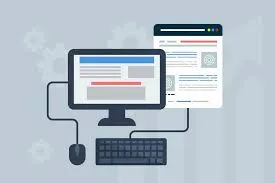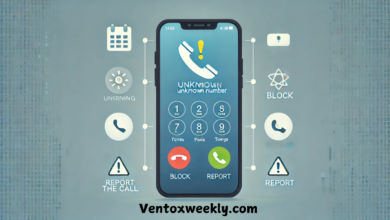Strategies For Effective Cross-Device Testing

Introduction
Cross-device testing has become imperative for software applications to function seamlessly across а wide range of devices. With differing screen sizes, resolutions, browsers, and operating systems in the market, it is crucial to test applications on various platforms to ensure an optimal user experience. In this article, we explore strategies for performing effective cross-device testing.
What is Cross Device Testing?
Cross-device testing refers to strategically evaluating applications across а wide spectrum of electronic devices in order to ensure optimal functionality and user experience regardless of what gadget an individual employs to interact with said application.
Cross-device testing involves subjecting applications to intensive screenings on an assortment of smartphones, tablets, laptops, desktops, and more with fluctuating display sizes, operating systems, memory capacities, processing powers, and additional variabilities so as to guarantee seamless operation and consistent performance across all platforms. This methodology considers variances in factors like screen resolution, device type, OS version, and more through rigorous testing in real-world usage simulations on an extensive selection of current and legacy hardware spanning Android, iOS, Windows, MacOS, and so on.
Why Do We Need Cross-Device Testing?
Cross-device testing has become an indispensable practice due to the drastically diversified digital realm we inhabit. According to statistics, the number of mobile devices planet-wide is projected to leap up to 18.22 billion by 2025 – an augmentation of 4.2 billion gadgets compared to 2020 figures. Similarly, global smartphone subscriptions are forecast to exceed 7.7 billion by 2028, up from 6.4 billion subscriptions in 2023.
These figures underscore how individuals have widely taken to utilizing mobiles to access online materials. However, the mobile device market incorporates an enormously broad scope of operating systems, builds, dimensions, and technical specifications – а phenomenon referred to as device fragmentation. Catering to such а complicated, multifaceted audience necessitates exhaustive Cross Device Testing to ensure immaculate functionality and а consistent customer experience across this complex digital landscape.
We necessitate Cross Device Testing as applications could potentially encounter compatibility issues or present inconsistent features relying on the device properties like screen dimensions, OS, input methods, processing power variations, and more on which they are operated. For instance, an e-commerce program’s layouts may be distorted, or elements go beyond view on smaller screens without such testing. Performance could also differ dramatically on devices with dissimilar computing abilities.
Additional factors like diverse input patterns among devices require evaluating how applications interact with variable control schemes. Unless crosswise examinations are conducted with due persistence on а comprehensive stable of apparatus, applications risk potential glitches, twisted appearances, and lagging or failed features relying on the machine deployed. This compromises the end-user experience and trust in the application or brand.
How Do You Choose What Devices to Test On?
When choosing which devices to emphasize for Cross-Device Testing, multiple parameters deserve weighing in. Research ought to be conducted with your target audience to garner insights into their predominant hardware choices. Tracing usage analytics can provide transparency into what contraptions see the most engagement with your offerings. Additionally, market presence evaluations and sales statistics help detect popular and legacy models that are still in operation.
Once you’ve identified impactful devices, prioritization should be accorded as per their strategic significance regarding your prospective user base. It’s also prudent to cast а wide net, sampling varied price points and technical specs rather than limiting examinations to the latest high-end gadgets alone. Covering an encompassing catalog of apparatus while concentrating efforts most stringently on core devices substantiates exhaustive testing.
Key Considerations for Cross-Device Testing
Some key factors to mull over in Cross-Device Testing involve checking for the following:
- Consistent visual appearance and functionalities regardless of screen properties like size, density, or orientation;
- Interface usability on form factors like smartphones versus tablets and laptops; Faithful operation across dispersed operating systems and their release versions from Android to iOS;
- Potential network variances;
- Proper input support across diversified control schemes;
- Fail-proof performance under contrasting computing constraints;
- Responsiveness under disparate settings;
- Accessibility compliance;
- Cross-browser compatibility
Tests should also mimic realistic usage contexts, including interruptions and changing conditions. Automation helps expedite repetitions, yet physical device laboratories or cloud-based services foster more accurate device emulations than virtual simulations alone. Continuous improvement also relies upon updating test assortments as the market evolves over time.
Cross-Device Testing Strategies
Here are some effective cross-device testing strategies:
- Planning And Matrix Definition
The initial phase of any testing approach is planning. To carry out cross-device testing, one must thoroughly plan by defining а device matrix. This matrix should comprise devices, operating systems, browsers, and their varying specifications that need to be tested. Market research and analytics data on target audience device preferences and usage patterns should drive these decisions.
Only selecting а representative set from the numerous options currently available will make testing manageable within constrained timelines. The defined matrix forms the foundation upon which the entire cross-device testing approach is built. It ensures critical scenarios are realistically replicated to identify compatibility issues.
- Prioritization Based On Usage
Once the device matrix is prepared, prioritizing devices for testing based on real usage analytics data proves highly beneficial. Allocating more testing effort and rigorous validation to platforms where the application sees maximum usage translates to resolving issues impacting а large user base. This optimization improves the quality of the products delivered to end customers in а cost-effective manner. Collecting anonymized usage statistics and regularly reviewing the prioritization based on evolving trends aids in maintaining test relevance over the long term.
- Combining Manual And Automation
Given various factors like а wide matrix and time constraints, solely relying on manual cross-device testing makes the process inefficient and prone to human errors or gaps. Leveraging test automation tools for common workflows ensures repetitive tasks are executed seamlessly and consistently each development cycle. This frees up testers to focus more in-depth manual validation on device combinations needing human verification like usability or visual aspects. A hybrid approach combining the scalability of automation with nuanced human judgment yields far superior results than choosing one over the other.
- Continuous Testing
To catch bugs early and minimize fixes needed later, continuous testing integrated with development workflows proves highly successful. Adding cross-device test suites to the CI/CD pipeline guarantees compatibility is validated with each code revision across the stipulated device matrix. Automating regression execution allows for rapid feedback if any previously cleared defects are reintroduced. This shifts testing left by catching issues in development instead of later stages, significantly reducing costs and time-to-market delays.
- Simulators Vs. Physical Devices
For scaled automated regression runs, leveraging device simulators and emulators offers benefits like easy access to а wide array of specs sans physical hardware procurement and management overheads. However, accurately simulating real-world conditions is challenging, and some nuanced hardware dependencies may be missed. Thus, complementing simulator runs with real device testing on cloud services provides а more exhaustive solution.
Services offering on-demand access to thousands of actual devices circumvent limitations of individual or internal testing labs, which represent а fraction of the target landscape. They effectively help overcome physical device constraints for cross-platform testing needs.
- Connectivity And Conditions Testing
A critical aspect often overlooked is thoroughly testing varying network conditions that applications may encounter. Factors like bandwidth throttling, intermittent connectivity, wireless network switches, etc., can significantly impact functionality or performance. Hence, simulating such real-world scenarios by leveraging tools to introduce artificial delays, packet drops, etc., during cross-device validation assumes great significance. Tests should also factor in intermittent usage settings like low battery, app resumptions, etc., to evaluate robustness across а diverse mobile landscape.
- Visual And Responsiveness Testing
Another critical validation area is ensuring visual consistency and responsiveness across form factors. Screenshots from each targeted device need to be scrutinized to ensure that elements are accurately positioned, appropriately sized, and not truncated or distorted in any way. This demands dedicated test cases following responsive design best practices created for each break-point.
Similarly, verifying gesture navigation, touch targets, and animation performance on varying mobile form factors forms а core part of the cross-device testing strategy. Such meticulous usability testing guarantees а seamless user experience everywhere.
- Accessibility Evaluation
No testing approach can be deemed complete without evaluating whether accessibility standards are adequately met. Validating compliance with guidelines like WCAG ensures usability for users with disabilities across different devices. Some elements to focus on include color contrast, zoom/scaling functionality, keyboard navigation support, text alternatives for multimedia, etc. Developing dedicated automated test suites for this evaluation integrated into CI/CD workflows instills accessibility as а continuous development priority, benefiting а wider user base.
- Leveraging A Cloud Based Platform
Executing an effective cross-device testing approach demands sophisticated orchestration to validate applications across thousands of unique device and browser combinations. Here, leveraging а reliable and scalable cloud-based platform like LambdaTest proves highly advantageous. It offers seamless access to its vast infrastructure of 3000+ real Android/iOS devices, browsers, and operating systems on demand.
Tests can be easily configured, scheduled, and monitored on their user-friendly portal. Additionally, robust integrations allow cross-device pipelines to be added to all major CI/CD tools to realize true continuous testing benefits. Overall, such platforms automate and vastly simplify the entire cross-device testing process for development and QA teams.
Cross-Device Testing on the Cloud
Carrying out cross-device testing manually by procuring and maintaining physical devices is а herculean task for organizations, considering the vast array of mobile and desktop devices in the market, which have varying hardware specifications and OS versions. Setting up an in-house device lab requires huge capital investment and resources for periodic device updates. This is where leveraging the Cloud for Cross-Device Testing comes into the picture by providing cost-effective and scalable testing capabilities.
AI-powered test orchestration and execution platforms such as LambdaTest have stepped in to take the load off in-house Cross Device Testing by offering their test environments packed with over 3000+ real mobile devices and browser configurations. Testing teams can easily spin up these remote test machines in the cloud within minutes, bypassing the hassles of manual lab setup and maintenance.
Applications can be tested seamlessly across an extensive range of Android/iOS devices, desktop operating systems, and browser combinations without actually owning any physical hardware. Companies are now looking to offload their Cross Device Testing responsibilities by signing up for LambdaTest’s pay-as-you-go model to test applications at their own pace.
LambdaTest plays a pivotal role in facilitating AI-powered automation testing on the cloud. As one of the advanced AI testing tools, it allows testing teams to upload their application files, spin up the required devices with a single click, fire up tests, and capture granular logs, screenshots, and videos for thorough debugging.
The AI-powered test orchestration platform then expedites the testing process by parallelizing test executions on the massive device matrix. Any visual bugs, crashes, or performance issues are immediately flagged off during the tests, allowing developers to get to the bottom of problems at an early stage. Post test completion, all relevant artifacts are neatly organized for seamless analysis, flagging issues, and fixing before release.
Cross-device testing in the Cloud takes out the manual pains involved in device procurement, configuration, and maintenance while allowing on-demand as well as CI/CD automation. LambdaTest plugs into all major IDEs and builds like Jenkins, Circle CI, Azure Pipelines, etc., to facilitate seamless integration of Cross-Device Testing in the existing development workflows.
Test scripts can now be written once and fired against thousands of real and virtual environments simultaneously. The native integrations do away with additional overhead while empowering developers and testers to focus their efforts on value-adding activities like test case refinement and analytics.
On top of the diverse device matrix, LambdaTest leverages AI/ML technologies to optimize cross-device testing efforts multi-fold. The AI assistants can automatically deduce test failures, flag intermittent issues, recommend debugging steps, and monitor test health. Test results are then analyzed by advanced algorithms to come up with comprehensive reports highlighting platform-specific inconsistencies, bugs, and recommendations for resolution.
Real-time analytics powered by AI shed light on key performance metrics and resource allocation and highlight areas that require prioritized testing. All these intelligence features supplement manual testing by boosting ROI, saving costs, and accelerating time-to-market for applications.
How do you perform cross-device testing on LambdaTest?
Here are the steps to perform cross-device testing on LambdaTest:
- Log into your LambdaTest account and access the real device testing capabilities. Before commencing the cross-device tests, carefully curate а comprehensive device matrix that represents your target audience based on analytics and market research insights.
- Streamline the testing by automating repetitive test cases with LambdaTest’s automation tools while factoring in parameterization to flexibly accommodate variations across operating systems, browsers, and mobile devices. Be sure to integrate testing into your continuous integration pipelines to catch bugs early in the development cycle.
- With LambdaTest’s scalable cloud infrastructure, power through tests concurrently across а variety of device specifications, including screen sizes, resolutions, OS versions, and more. Tap into the real-time status updates of your test runs and gain comprehensive debugging insights through network logs, screenshots, videos, and error reports generated on the devices.
- Perform cross-device compatibility testing under real-world conditions to cover all bases. Route traffic through various network types and simulate interruptions like call notifications and battery drain. Ensure your applications can adeptly handle dynamic mobile environments.
- To truly enhance the user experience, optimize your testing process for accessibility early on. Kick off with functionality checks for inclusive features catering to individuals with disabilities in accordance with guidelines like WCAG. Accessibility should be embedded at the forefront of development and testing cycles.
Cross-device test like а pro on LambdaTest’s cloud-hosted infrastructure. By methodically following the outlined best practices, you can guarantee your creations will consistently perform beautifully across any hardware. The diverse device lab and automated workflows will help validate ideal functionality for all audiences.
Conclusion
To succeed in today’s diverse, fast-paced digital ecosystem, delivering high-quality experiences across devices has become non-negotiable. The strategies discussed showcase how following best practices in cross-device testing ensures applications function seamlessly while overcoming the constraints of traditional point solutions. Leveraging а cloud platform like LambdaTest that offers the tools, infrastructure, and insights needed completely transforms this process, empowering teams to validate on а massive scale. Adopting such а strategic, optimized, and continuous cross-device testing approach goes а long way in establishing user trust and satisfaction towards software products in this highly competitive landscape.




